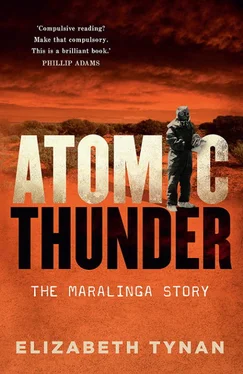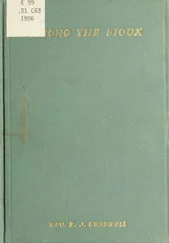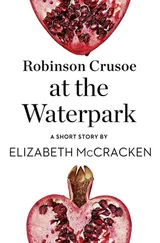While Alan Nunn May’s arrest and imprisonment had significant consequences, they did not end the nuclear spy scandal. In 1950, another – much more important – physicist, Klaus Fuchs, faced the same fate. Fuchs, also a communist, was a brilliant scientist who was central to the Manhattan Project and a close colleague of Penney. He was arrested and served nine years in jail (Penney visited him there). In his confession he said that he had committed espionage ‘in the name of historical determinism’. Fuchs had been attracted to communist ideology in his home country, Germany, during the early days of the Nazi regime. He escaped to the UK in 1933 and studied at various British universities during the 1930s. For a brief time in 1940, he was interned as an enemy alien on the Isle of Man, and was moved to Canada before returning to Britain after the physicist Max Born petitioned for his release. He resumed his physics research, and his gifts as a physicist were quickly appreciated through his work, from May 1941, at the University of Birmingham. He supplied information to the Soviet Union from the time he joined Birmingham and worked under Rudolf Peierls, co-author of the Frisch–Peierls Memorandum. He went to the US in 1943 with the British mission, after the Maud Report had shown the way to a nuclear bomb. Around the same time he became a naturalised British citizen.
Fuchs worked initially in New York and later at Los Alamos as a theoretical physicist. He handed over a large amount of information to the Soviets about the forthcoming Trinity test. This essentially meant the bombs dropped on Japan were no surprise to Moscow. At the end of the war, Fuchs returned to Britain and was centrally involved in both nuclear energy and nuclear weapons development. He operated separately to Alan Nunn May and was not part of the same espionage ring, although they did share the same Soviet contact at one time.
When Nunn May was arrested, Fuchs was concerned enough to avoid using the London-based contact who was involved with Nunn May. He continued his espionage, though, passing secrets to a new contact during meetings at the Nagshead pub in London. Only then did he take payment. He accepted about £100 to help defray the costs involved in the extra security precautions he required in the light of the Nunn May exposure. He also believed that accepting some money would assure his new contact of this loyalty.
The first Soviet atomic weapon tested, in 1949, was similar in concept to the Fat Man weapon dropped on Nagasaki. It was made possible in large part by the hundreds of documents Fuchs had passed to his Soviet handlers. In recent years, more evidence has come to light that Fuchs also passed information about the much more powerful fusion weapons that followed. Many of those documents originated from William Penney, although there is no suggestion that Penney knew about Fuchs’ espionage activities. Fuchs was probably the most damaging of all the nuclear spies. Unlike Nunn May, Fuchs was part of an elite group within the Manhattan Project centrally involved in the bomb project. He also spied for longer and passed crucial information about fusion weapons.
The American spy Theodore (Ted) Hall was a scientific prodigy who graduated from Harvard at 18 and was only 19 when he joined the Manhattan Project. He also supplied technical information to the Soviets about the plutonium bomb dropped on Nagasaki. According to Hall’s 1999 obituary, ‘Of all the scientists, diplomats and others who passed atomic secrets to Moscow – Fuchs, Maclean, Nunn May… and the rest – it is likely that only Fuchs was more valuable [than Hall] to the Soviet bomb programme’. Like Nunn May and Fuchs, Hall did not like scientific secrecy. He believed that the world would be a better place if nuclear knowledge was shared. His contribution was more significant than that of the Cambridge spies.
The Cambridge set are the best known spies, but in a sense the least damaging. They were not scientists and so were unable to share physics like Nunn May, Fuchs and Hall. Kim Philby, Donald Maclean, Guy Burgess and Anthony Blunt passed a variety of non-technical nuclear secrets to the Soviet Union, as well as political and tactical information that kept the USSR informed about the strength of the US atomic arsenal. In his 1980s book Spycatcher , Peter Wright, a former agent of the British spy service MI5, alleged that Roger Hollis, who headed MI5 between 1956 and 1965, was a ‘fifth man’ Soviet agent. (Hollis visited Australia in the late 1940s to investigate the allegations of espionage that became the impetus for creating ASIO.) British journalist Chapman Pincher had earlier made the same allegations. The first Cambridge spy was uncovered just after Fuchs, in 1951, although it took many years for them all to be outed. To this day, doubt remains about whether or not Hollis was a spy too.
As the spies were uncovered, the US retreated behind the McMahon Act. But in the UK, work on the bomb proceeded. The GEN.163 committee set up a new organisation called Basic High Explosive Research and appointed the Manhattan veteran Penney to head it. Penney had recently had a stint at Bikini Atoll, working with the Americans on their postwar bomb (as had Klaus Fuchs), just before the McMahon Act became law. His name is synonymous with the British nuclear tests in Australia, and his role will be examined in more detail later. He was the best and most logical person to take the British nuclear weapons development campaign forwards. GEN.163 clearly set his pathway to Maralinga.
Penney continued to work with his old Manhattan confreres, including Titterton and (fatefully) Fuchs. The project name was soon changed to High Explosive Research (HER), continuing the British tradition of choosing banal names to deter interest. The quest to build a British A-bomb was first announced to the public on 12 May 1948. HER researchers initially worked at various laboratories and test facilities in Kent, Essex and Suffolk, until they moved to a former airfield in Berkshire called Aldermaston. The atomic weapons development and testing activities in Australia were managed from Alder-maston. Some work was also carried out at Fort Halstead and at the Woolwich Arsenal, where Penney was based in those early days. HER was renamed the Atomic Weapons Research Establishment (AWRE) in 1950.
One of Penney’s many lasting contributions was Blue Danube, Britain’s first tactical nuclear weapon. The design of the weapon was solid, sound and (according to many, including official historian Margaret Gowing) better than comparable American bombs at the time. A fission weapon powered by plutonium, it was similar in many ways to the Fat Man device detonated over Nagasaki. However, its unique design features made it more efficient and easier to assemble, control, aim and store.
Penney brought an excellent problem-solving mind to the task and oversaw four secret research and development groups that worked on key aspects of the bomb’s design. The team also worked with a wide range of commercial engineering contractors and manufacturers throughout England and Wales. They managed to maintain a secret operation despite the many people involved. As Jonathan Aylen put it:
Blue Danube’s practical development was a product of a wider ‘warfare state’ of Cold War Britain, not just the product of a few boffins. In truth, the first atomic bomb was designed in suburban centres and built in ordinary factories down prosaic back streets by regular workers – men and women – in towns across industrial Britain.
There is something ineffably British in this process, just as when the Maud Committee used laboratory word games to come up with the most impenetrable codenames for work done in plain sight.
So Blue Danube was created in the dingy factories and hastily built research and development laboratories of postwar Britain. It came into being in a roundabout way, untested, during extraordinary and tumultuous times. The leaders of the project to create it, including the brilliant mathematical physicist Penney, were confident that it would work. But confidence is not enough. Weapons must always be tested. As the HER project proceeded, and the scientists conveyed their reports to their political masters, the next step was clear. Blue Danube would have to be exploded. Since the nuclear spies and the McMahon Act had put Nevada and New Mexico off limits, the question arose: where could the fledgling British nuclear deterrent be tested?
Читать дальше












